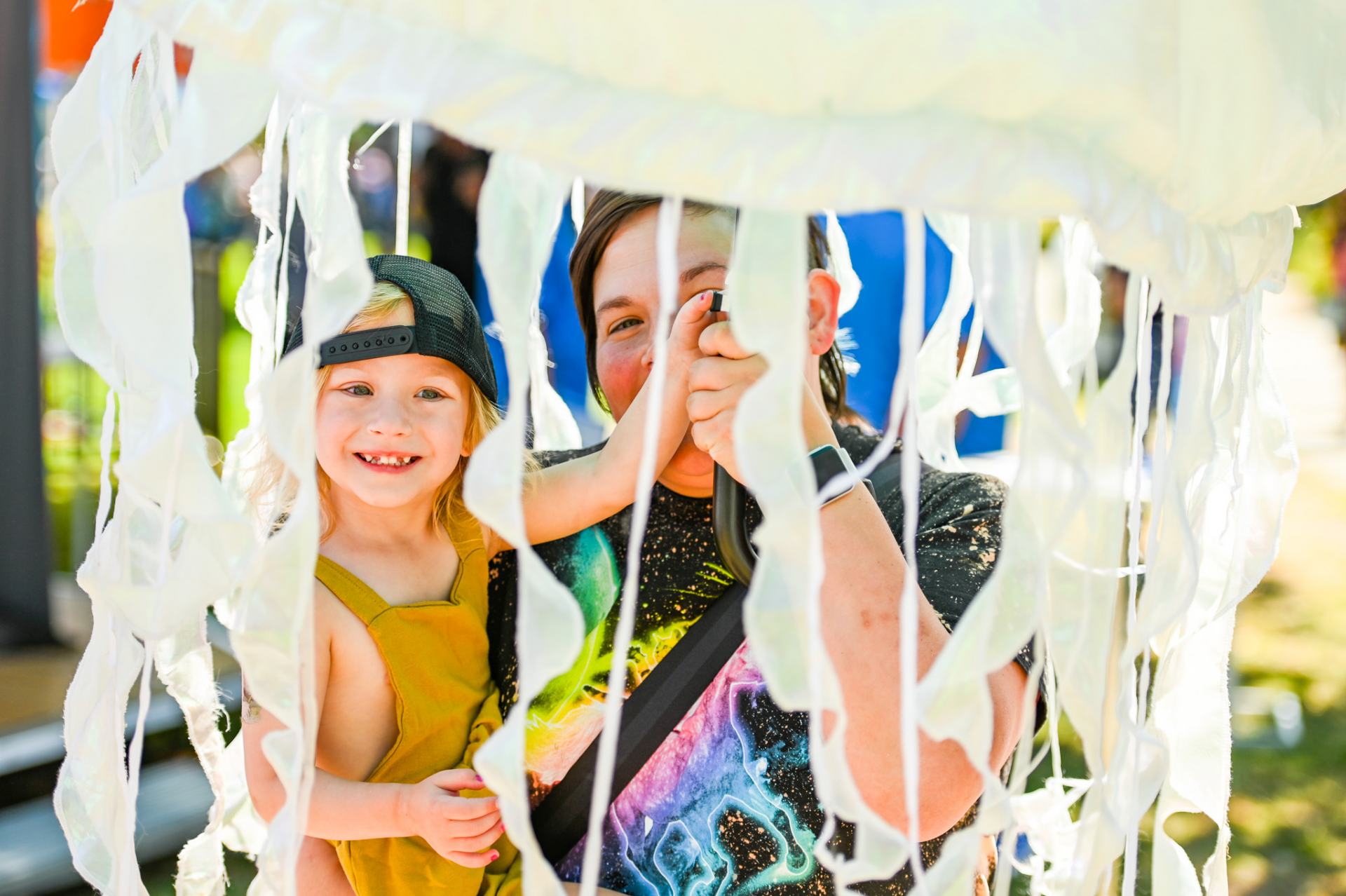

When I found out I was pregnant, I felt so prepared. I foolishly thought that my experience as a Child and Youth Care Worker with education in child development would mean I would have a leg up on this whole parenting thing. Boy, was I wrong.
Just before Zoe was discharged from the NICU, we found out that she had moderate to severe sensori-neural hearing loss in both ears. This means her access to sound relies on the use of hearing aids. Having hearing aids is not a fix-all, it’s not even a fix. Actually, many deaf / hard of hearing individuals choose to live life without the use of hearing aids.
Zoe will wear her hearing aids to school and daycare, but on the weekends prefers not to wear them. Luckily, we have access to great intervention programs here and Zoe speaks both American Sign Language (ASL) and English.

Typically Zoe copes just fine in day to day life, but there are some areas that she needs a little more support than hearing kids. One of these areas is socialization. Because Zoe doesn’t have typical access to sound, it is important for us to help her navigate the hearing world. This includes socializing with hearing kids and adults as well as her deaf / hard of hearing friends.
Now, how do two socially awkward hearing parents teach and encourage their hard of hearing daughter to have appropriate social skills? Well, I think like all parents a lot of the skills are taught by modelling. Some of these skills definitely need to be adapted, as well as taught to our family and friends.
Some challenges Zoe might encounter in social situations include:
- Loud environment which will lessen her access to speech
- Language barrier: should she speak ASL or English?
- Needs to be looking at the speaker to hear what they are saying or see what they are signing
So, how do we overcome these challenges?

In loud environments Zoe struggles to hear speech because of the background noise in her hearing aids, or because she is not wearing them at all. In these instances we rely on ASL to communicate. This can be a struggle since many of our friends and family don’t speak ASL. In these situations we try to teach or model self-advocacy. If she can’t hear what someone is saying to her, or can’t understand, we encourage her to ask them to say it again. She is only four so we need to model this for her if she doesn’t do it herself.
Many times when we are out in public, or even in our building elevator I will repeat or sign what people are saying so Zoe can be a part of the conversation. She has logs of questions for people, so I may even need to repeat what she has said to them so that they can respond. I think by repeating and adding in some signs it gives Zoe more access to the conversation and it also builds her language capabilities.

It is also important for me, and people talking with Zoe, to get down on her level. As we know, eye contact is important for communication and to communicate with kids, hearing or not, getting down on their level definitely helps. I know when Zoe and I talk face to face she gets much more of the conversation.
When Zoe is playing with her friends, either deaf or hearing she will get confused over what language to speak. Some of her friends are profoundly deaf meaning they have no access to sound and their language is ASL. In these situations we need to remind Zoe to use her signs so her friends can understand. She’s a busy kid, so we also need to remind her to pay attention when she is being spoken to. If someone is speaking orally, or with ASL, Zoe needs to see them to understand what they are saying. This is easier said than done, picture wrangling a wet cat.
Zoe also has hearing friends. With these friends she also struggles with a language barrier. She knows to speak English with them, but her language delay sometimes gets in the way. This can be seen by her preferring to play with younger kids who are communicating on the same level, or, not speaking at all during play.

Some issues that can occur when she chooses not to speak is that she will growl or grunt, or have a meltdown when there is a conflict. She is quick to meltdown. Right now we are working on giving her words or colours to describe her feelings. We encourage her to use her words when we see the escalation, but if we are too late we wait until she has calmed down to ask what happened. When we talk about the incident we will talk about how she felt, and how she recovered and what she can do differently next time. I mean she is four, so meltdowns are typical so this will be a slow process unfortunately.
Being a kid who has spent significant time around adults, whether its friends and family, medical professionals, or even her teachers, Zoe can be very friendly with strangers. She is quick to chat, or even follow strangers. This is concerning since if she is far enough away from us, she can’t hear us calling for her. It’s important to us that Zoe is not necessarily afraid of strangers, but she is aware that there are boundaries. When we are out we encourage her to stay close and within eyesight because if we can’t see her, chances are she can’t hear us.
We are also teaching her about consent. This mostly comes about because she likes to get in other people’s space or touch their things that she finds interesting. This is important because she misses some of the social cues that she can’t hear. We also tell her that people can’t touch her or her things without asking her permission.

Like any kid, teaching appropriate behaviour is tough, but with Zoe, or for Zoe, we also need to teach some skills to our friends and family. Since most of our friends and family do not speak ASL, Zoe relies on speaking orally and listening when around them. Just listening is a lot of work for someone with hearing loss because it takes a lot of attention.
We often have to remind people to make sure Zoe is looking at them when they are speaking, because if she isn’t she is definitely not listening to them, or even aware that they are talking. We also encourage people to tap her shoulder to get her attention. This sometimes doesn’t work, just because she is four and probably ignoring the tap. To optimize her access to speech in these situations it is also important to make sure that background noise is reduced meaning no music or TV.
I think what is important to remember is that the world is set up for hearing people. Kids like Zoe have to work a little harder than a hearing kid to keep up with conversations, situational awareness, and even learning in a classroom. It would be amazing if everyone knew a little sign language, even if it’s just “How are you?”


